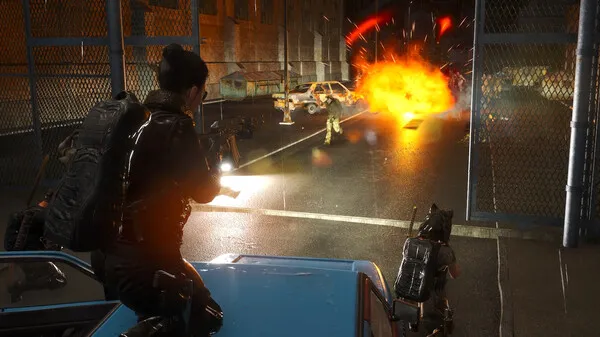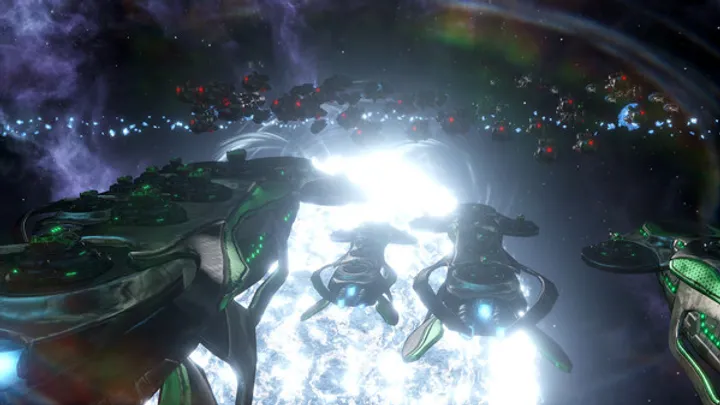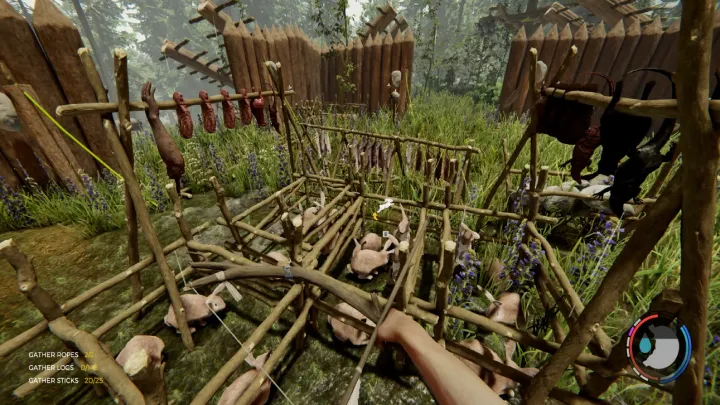SCUM, the open-world survival game developed by Gamepires, prides itself on realism—from metabolism tracking to bullet physics. But one system that’s drawn increasing criticism from veteran players is the weight and strength mechanic. While intended to simulate realistic load management, it often punishes tactical gameplay and creates frustrating bottlenecks in progression. This article explores the weight system in SCUM in depth, analyzing how it evolves over time, impacts survival, and breaks immersion. We’ll dissect its mechanics, consequences, and community feedback, offering a comprehensive look at one of the game’s most persistent issues.
Early Game: The Strength Stat Dilemma
In SCUM, every character starts with a customizable set of attributes. Strength directly affects how much weight a player can carry. Most new players opt for a balanced build, often assigning around 3.0 strength. However, this default value quickly proves inefficient.
Even with ample inventory space, players find themselves overburdened by basic gear—especially in cold environments where heavier clothing is essential. The result is a paradox: you can carry more items visually, but your character becomes sluggish due to weight penalties.
Early frustrations:
- 3.0 strength limits tactical gear loadouts
- Winter clothing adds unavoidable weight
- Movement penalties discourage exploration
Conclusion: The strength stat feels disproportionately weak early on, undermining survival realism and player agency .
.
Mid-Game: Inventory vs. Weight Conflict
As players progress, they acquire backpacks, tactical vests, and weaponry. Visually, their inventory expands, but the weight system doesn’t scale accordingly. A fully geared character often exceeds their weight limit, even with moderate strength.
This creates a gameplay contradiction: players are encouraged to loot and prepare, yet punished for doing so. The weight system forces constant micromanagement—dropping items, reorganizing gear, and avoiding useful equipment.
Inventory challenges:
- Backpacks offer space but not weight tolerance
- Ammo and weapons are disproportionately heavy
- Frequent gear swaps disrupt immersion
Conclusion: Mid-game progression is stifled by a system that penalizes preparedness, contradicting core survival mechanics.
Clothing and Moisture Mechanics
SCUM’s clothing system adds realism by tracking wetness and insulation. However, wet clothing drastically increases weight, often pushing players into overburdened status. Shoes, in particular, absorb water unrealistically—even when standing in shallow puddles.
Drying clothes takes an excessive amount of time, especially in cold or rainy conditions. This forces players to choose between staying warm or staying mobile—an unrealistic trade-off that punishes environmental adaptation.
Moisture issues:
- Shoes reach 100% wetness in minimal water
- Drying times are unbalanced across clothing types
- Wet gear adds weight without tactical benefit
Conclusion: The moisture system amplifies weight penalties, discouraging realistic survival behavior like dressing for the weather.
Vehicle Weight and Passenger Desync
Vehicles in SCUM offer mobility and storage, but they’re not immune to weight issues. Overloaded vehicles handle poorly, and passengers with weak internet connections often experience desync and physics glitches.
In multiplayer, this leads to bizarre outcomes—vehicles flipping, passengers being launched, or gear disappearing. The weight system doesn’t account for network variability, making cooperative play unreliable.
Vehicle problems:
- Weight affects handling and fuel efficiency
- Desync causes collision misinterpretation
- Multiplayer transport becomes risky
Conclusion: Vehicles should offer relief from weight constraints, but instead introduce new instability and unpredictability.
Combat and Mobility Penalties
Weight directly affects stamina and movement speed. In combat, this can be fatal. Players carrying heavy gear suffer slower sprint speeds, reduced stamina regen, and longer recovery times. This punishes tactical loadouts and favors minimalism.
Ironically, players who prepare for combat—bringing armor, ammo, and medical supplies—are at a disadvantage compared to lightly geared opponents. The system discourages realism and strategic depth.
Combat drawbacks:
- Heavy gear reduces mobility
- Stamina drain affects aiming and dodging
- Tactical preparation is punished
Conclusion: The weight system undermines combat realism, rewarding minimalism over strategy.
Crafting and Resource Gathering
Crafting in SCUM requires collecting materials—logs, stones, scrap metal, and more. These items are heavy, and gathering them often exceeds weight limits. Players must make multiple trips or drop gear to carry resources.
This slows down base-building and crafting progression. Even with wheelbarrows or vehicles, the weight system creates friction that feels more tedious than immersive.
Crafting constraints:
- Logs and stones are extremely heavy
- Resource trips require constant gear juggling
- Base-building becomes a logistical grind
Conclusion: Crafting should be empowering, but weight mechanics turn it into a chore, discouraging creative play.
Strength Training: A Broken Loop
SCUM allows players to increase strength through physical activity—running with weight, melee combat, and other actions. However, the progression is painfully slow. Even after hours of effort, strength gains are minimal.
This creates a broken loop: players need strength to carry gear, but can’t carry gear without strength. The training system lacks feedback, milestones, or meaningful rewards, making it feel unrewarding.
Training issues:
- Strength gain is extremely slow
- No visible progress indicators
- Activities yield inconsistent results
Conclusion: Strength training is conceptually sound but mechanically broken, trapping players in a frustrating loop.
PvP and Loot Economy Imbalance
In PvP scenarios, weight penalties skew combat balance. Heavily geared players are slower and easier targets. Meanwhile, loot hoarding becomes inefficient—players can’t carry enough to justify raiding or exploration.
This affects server economies. Valuable loot is left behind, and players resort to stashing gear in hidden locations rather than carrying it. The weight system distorts risk-reward dynamics.
PvP consequences:
- Heavily geared players are disadvantaged
- Loot hoarding is impractical
- Server economies become fragmented
Conclusion: Weight mechanics disrupt PvP balance and loot dynamics, reducing incentive for exploration and conflict.
Community Feedback and Modding Workarounds
The SCUM community has voiced consistent concerns about the weight system. Forum threads and Steam discussions highlight its unrealistic constraints and gameplay contradictions. Some players use mods or server settings to bypass weight limits.
While modding offers temporary relief, it fragments the player base and undermines official progression. Developers have acknowledged feedback but made limited changes, leaving the issue unresolved.
Community response:
- Widespread criticism of weight mechanics
- Modding used to bypass limitations
- Developer response has been minimal
Conclusion: The community wants change, but official updates have been slow, forcing players to seek external solutions.
Proposed Solutions and Design Alternatives
To fix the weight system, SCUM could implement several changes. First, increase base strength or scale weight tolerance more generously. Second, adjust clothing wetness mechanics to reflect realistic absorption. Third, improve strength training feedback and pacing.
Additionally, gear weight could be rebalanced—especially for ammo, clothing, and crafting materials. Vehicles should offer stable transport without punishing passengers. These changes would restore realism and reward tactical gameplay.
Suggested improvements:
- Boost base strength or weight tolerance
- Rebalance gear and moisture mechanics
- Enhance strength training progression
Conclusion: SCUM’s weight system needs a holistic redesign to align with its survival ethos and player expectations.
Conclusion
SCUM’s weight and strength mechanics were designed to simulate realism, but they’ve instead created a frustrating bottleneck that affects every aspect of gameplay—from exploration and combat to crafting and PvP. The system punishes tactical preparation, breaks immersion, and forces players into unrealistic choices. While the community has voiced concerns, meaningful changes remain elusive. A rework of the weight system could transform SCUM from a grind-heavy experience into a truly immersive survival sandbox

















